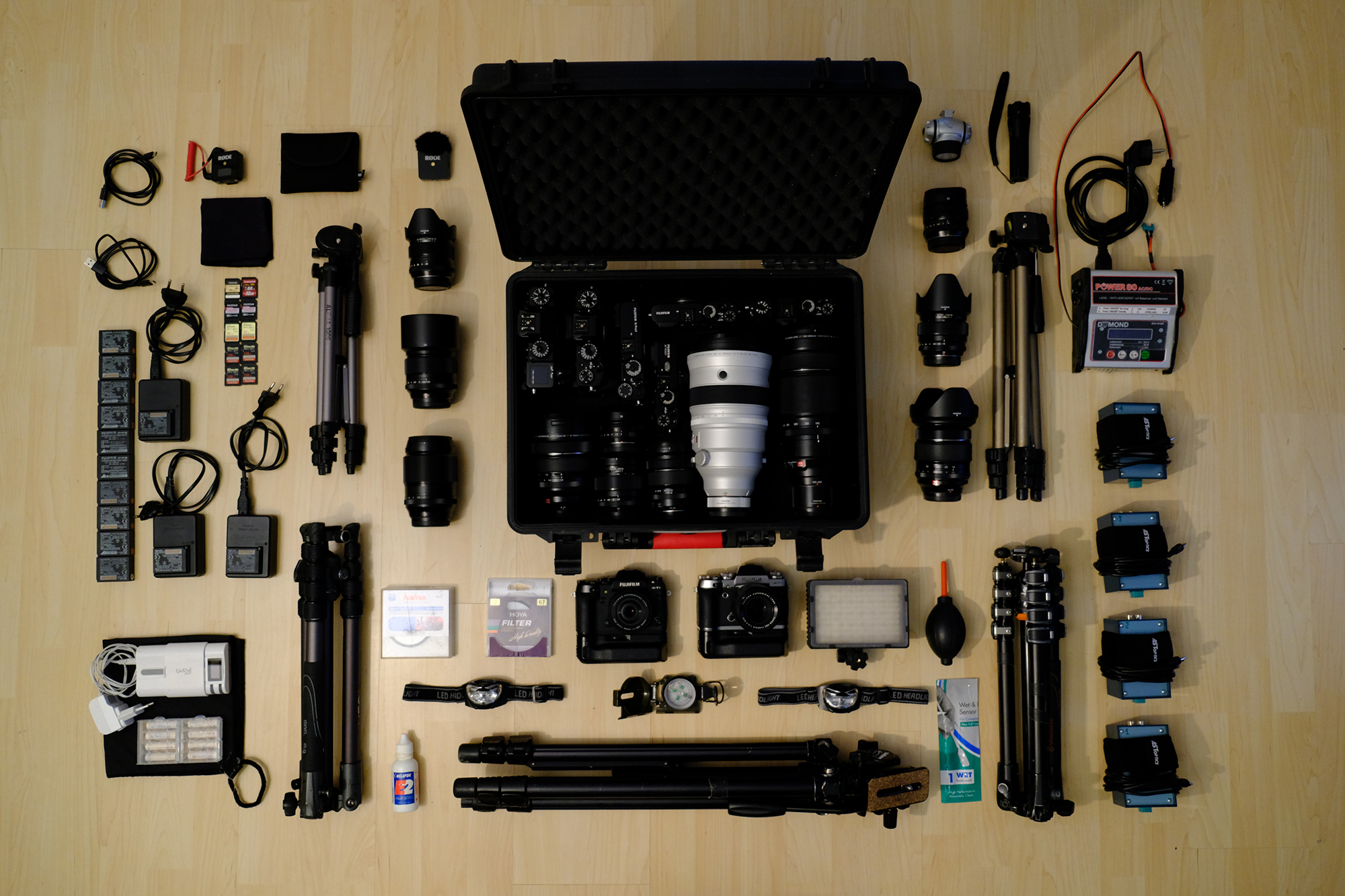
Eugen Kamenew
Eugen Kamenew là nhiếp ảnh gia thám hiểm tự do. Anh coi mình như một người quốc tế. Không có gì đáng ngạc nhiên, vì anh sinh ra ở Kazakhstan, lớn lên ở Nga, đã theo học ngành điện ảnh tại Đại học Hawaii Pacific ở Hoa Kỳ và đã hoàn thành Văn bằng học thuật về xã hội học tại Đại học Philipps Marburg, Đức. Là một nhiếp ảnh gia đam mê thiên văn học, anh tin rằng nhiếp ảnh không có bất kỳ ranh giới xã hội, chính trị và văn hóa nào. Hệ thống Fujifilm X đang cung cấp cho anh một công cụ phổ quát để mô tả vẻ đẹp của bầu trời đêm theo cách rất độc đáo. Là một nghệ sĩ chụp ảnh thiên văn, sự lựa chọn tỉnh táo của anh ấy đã khớp với máy ảnh Fujifilm. Do hiệu suất tuyệt vời của cảm biến X-Trans CMOS kết hợp với ống kính Fujinon hình cầu trong môi trường ánh sáng yếu, tầm nhìn của anh không bị giới hạn bởi các điều kiện kỹ thuật nữa. Trong chuyến thám hiểm toàn cầu của mình, nhiếp ảnh gia này với thiết bị của anh gần như là “vô hình”. Tất cả các máy ảnh Fujifilm X đều nhẹ, linh hoạt trong vận chuyển và rất thoải mái khi sử dụng. Cách chụp ảnh đã phát triển vượt bậc kể từ giây phút anh để một chiếc DSLR nặng ở nhà và đổi thành máy ảnh Fujifilm. Hiệu suất tuyệt vời của Hệ thống X là một sự phản ánh trong tác phẩm nhiếp ảnh của Eugen Kamenew. Hình ảnh của anh là sự cộng sinh của một nền văn minh nhân loại trong bối cảnh vũ trụ. Thông điệp bao quát của anh: “Trái đất của chúng ta dành cho mọi người dưới một bầu trời”. Thành tích nhiếp ảnh của anh đã nhiều lần đạt được vị trí cao nhất tại các giải thưởng quốc tế. Năm 2014, anh nhận được một trong những giải thưởng uy tín nhất về chụp ảnh thiên văn. Eugen Kamenew đã được đề cử giải thưởng “Nhiếp ảnh gia thiên văn của năm 2014” ở Luân Đôn với hạng mục “Con người và Bầu trời”, do tạp chí Royal Greenwich và đài BBC Sky at Night bình chọn.

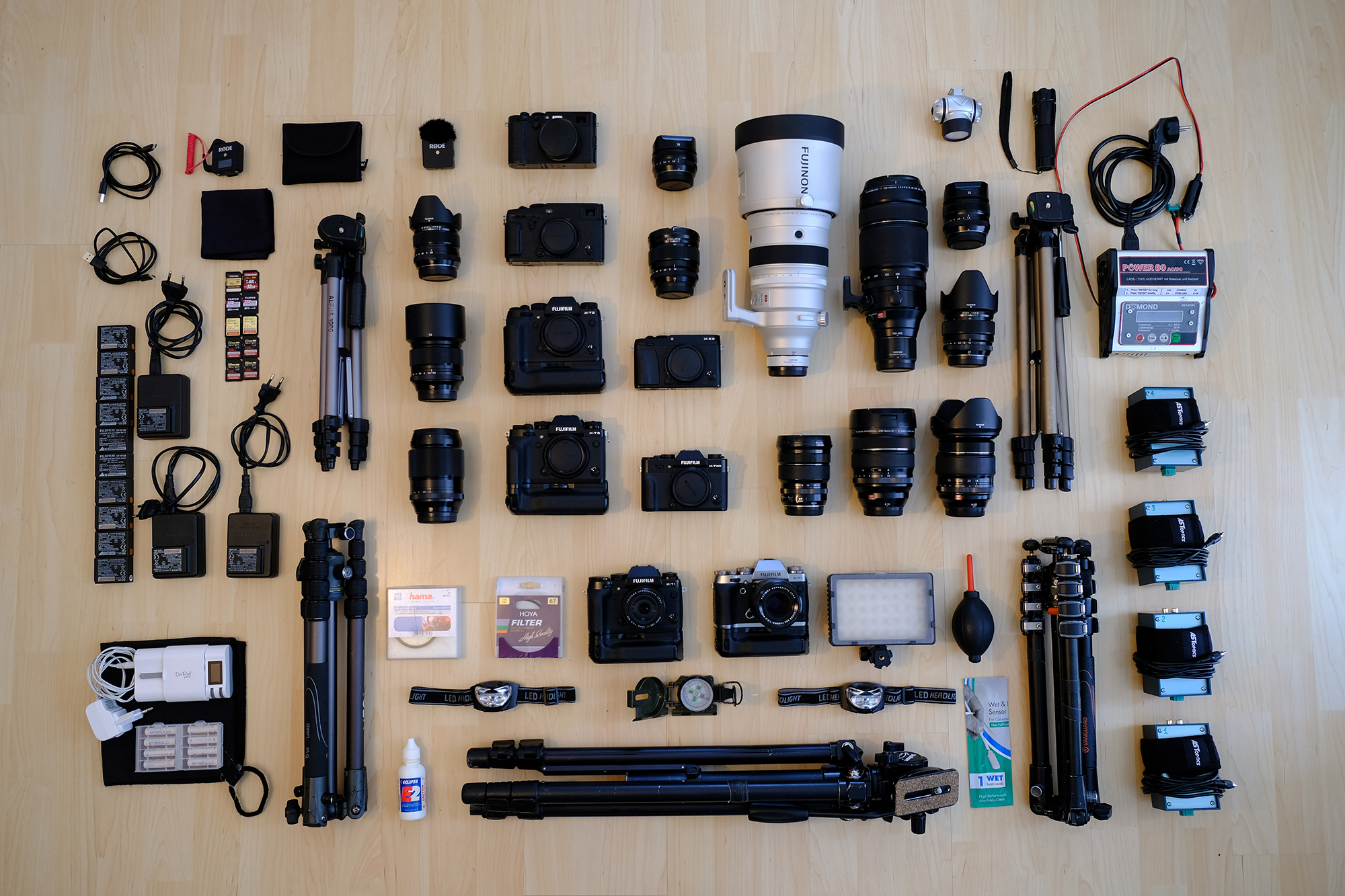
-
When X-Photographer Eugen Kamanew takes photos, he is usually facing the sky. The favorite motives of the internationally renowned photographer are found in the infinite universe. In order to capture the Northern Lights in the Arctic Circle or total solar eclipses, he not only has to travel all over the world, but he also needs the right equipment.
In our article #WhatsInMyCameraBag Eugen shows us, which cameras and lenses never let him down even at temperatures well below zero, at darkness, during long time exposures and operating hours.
Did Eugen spark your interest? Take a look at his workshop program at our FUJIFILMSchool: Eugens’ Workshops 

-
FUJIFILM north of the Polar Circle
As an official FUJIFILM X-Photographer I portray the beauty and the aesthetics of the cosmos. I have been using system cameras of the FUJIFILM X system for several years now. In my robust photography case I always carry at least seven cameras. Currently I prefer to work with FUJIFILM X-T3, FUJIFILM X-Pro3, FUJIFILM X-E3, FUJIFILM X-T30, FUJIFILM X-H1 and FUJIFILM X100F. But also the previous models such as FUJIFILM X-T2 and two FUJIFILM X-T1 are also used frequently.
The large number of cameras does not serve as backup in case if one camera would fail. I rather want to be on the safe side and record rare astronomical events with several cameras at the same time. Using only one camera would be too risky for me personally.
Especially when I am photographing shooting stars, the probability to catch one or even more meteors increases with the number of cameras used. 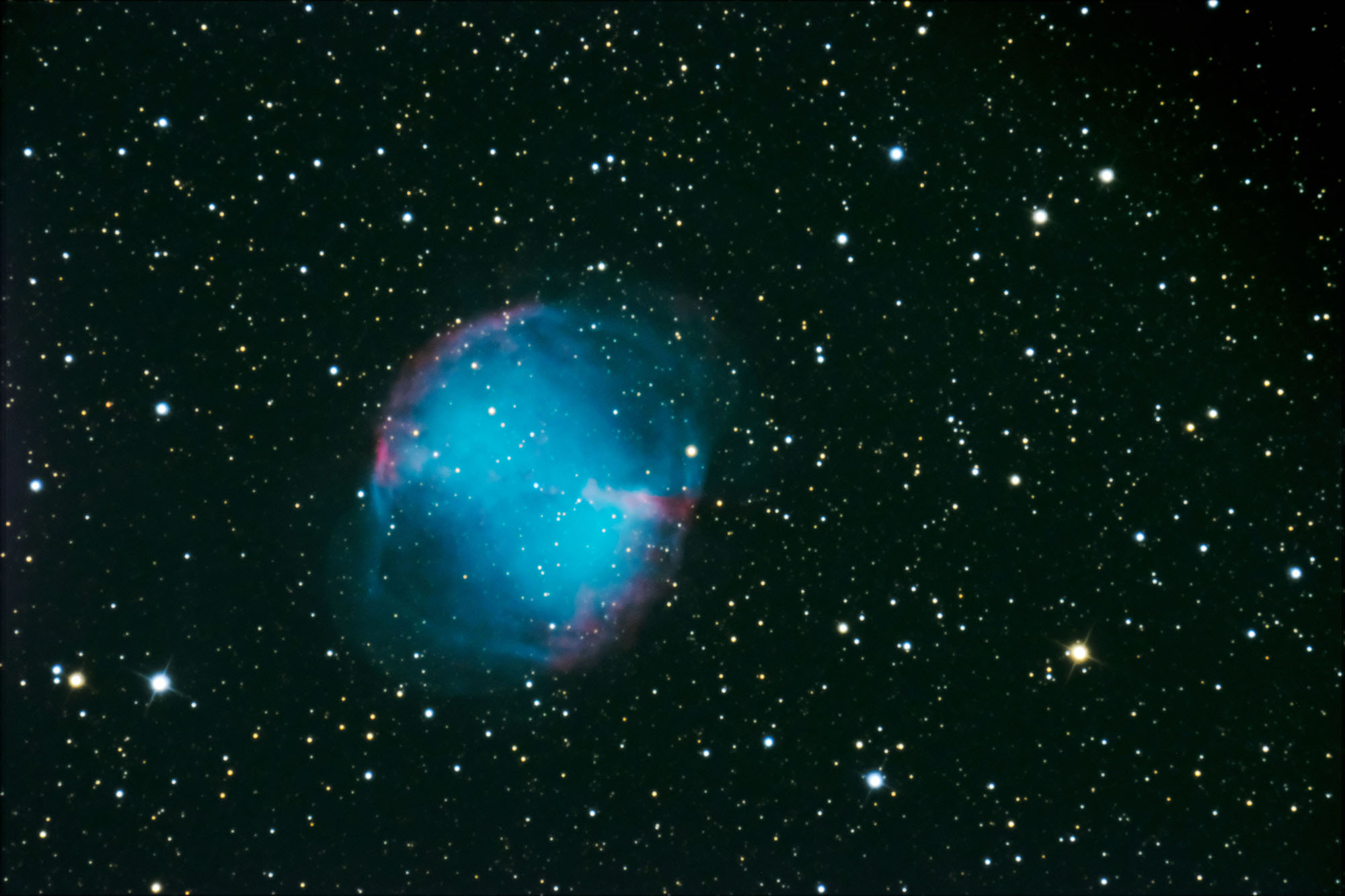
Dumbbell Nebula, M27 | FUJIFILM X-T2 with 18-inch Ritchey-Chrétien reflecting telescope, telescope diameter D=46 cm, telescope focal length F=3640 mm | 120 sec. | ISO 6400
Postproduction: combination of 5 light, 5 dark and 5 offset frames.
FUJIFILM X-H1 with the planet Venus in the background
FUJIFILM X-T3 | F2.8 | 8 sec. | ISO 200 | 55mm.-
Which lenses to choose when shooting the universe
Every year in March I offer popular trips to the Northern Lights. Since the northern lights can be seen in all directions, I can cover the complete night sky with my seven cameras. When shooting the Northern Lights I use all FUJINON wide angle lenses that are currently on the market: The FUJINON XF8-16mmF2.8 R LM WR, the FUJINON XF10-24mmF4.0 R OIS, the FUJINON XF16mmF1.4 R WR, the FUJINON XF18mmF2 R, the FUJINON XF14mmF2.8 R, the FUJINON XF16-55mmF2.8 R LM WR and the FUJINON XF18-55mmF2.8-4.0 R LM OIS.
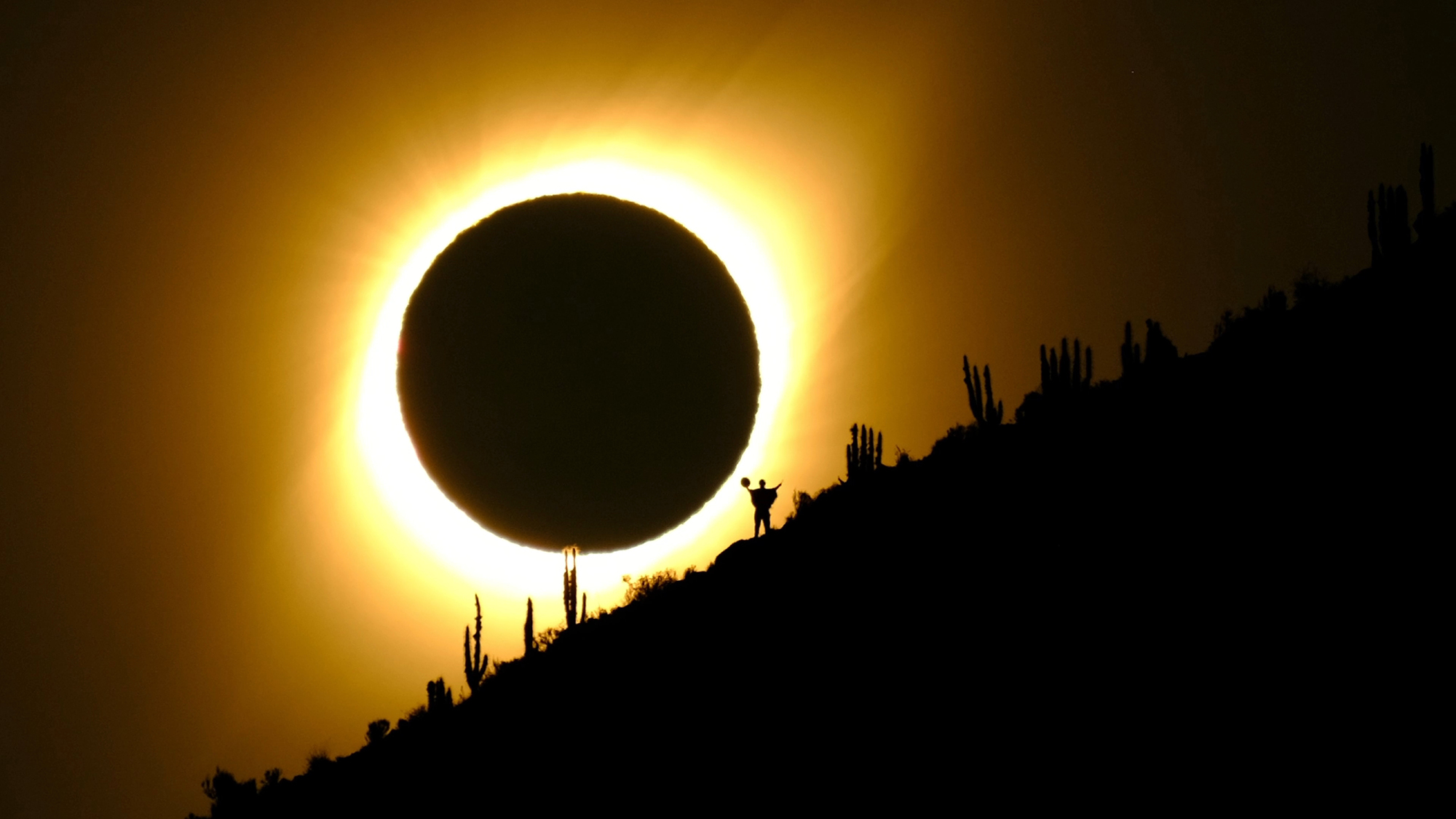
Total Solar Eclipse in Chile at 02.07.2019
Frame from 4K video | FUJIFILM X-T3 | FUJINON XF100-400mmF4.5-5.6 R LM OIS WR | FUJIFILM XF2X TC WR teleconverter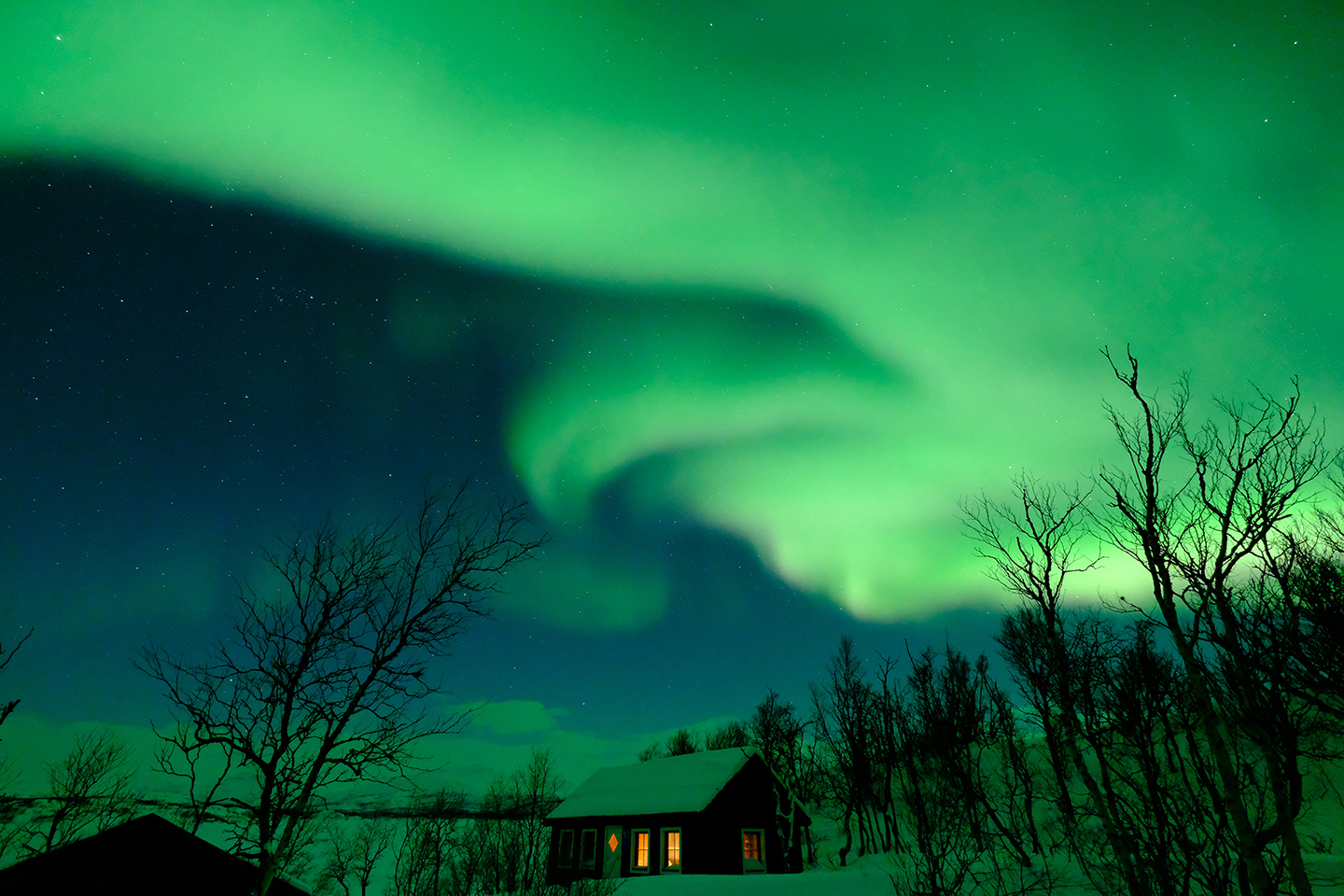
Northern lights during photo trips in Sweden
FUJIFILM X-Pro2 | F4.0 | 8 sec. | ISO 6400 | 10mm.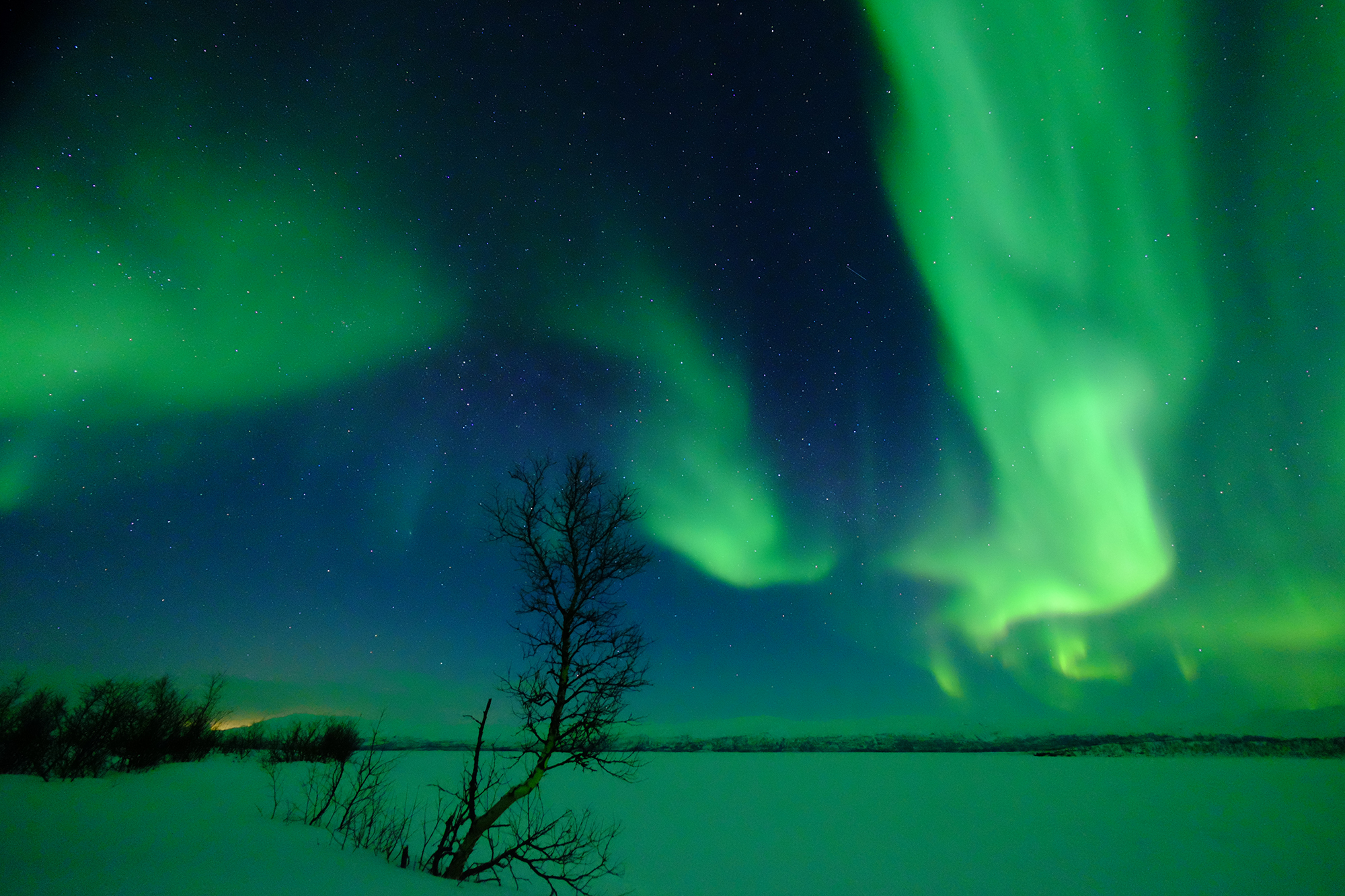
Northern lights during photo trips in Sweden
FUJIFILM X-T1 | F2.8 | 8 sec. | ISO 6400 | 8mm.
FUJIFILM X-Pro3 with FUJINON 200mmF2.0 R LM OIS WR and Milky Way
FUJIFILM X-T3 | F1.4 | 30 sec. | ISO 2000 | 16mm-
Electrical heating bands against icing
To prevent my lenses from freezing in the arctic minus temperatures, I put electric heating bands in my photography case. Some FUJIFILM cameras, for instance the FUJIFILM X-T3 or the FUJIFILM X-Pro3, are weatherproof and operate even at temperatures as low as -10 degrees Celsius. Other cameras, such as the FUJIFILM X-T30, are not weatherproof, but still operate down to 0 degrees Celsius. In all the years that I have been offering these trips to the Aurora Borealis, I have never seen a FUJIFLM camera fail. Moreover even non-weatherproof FUJIFILM cameras have sometimes worked through the entire arctic night at temperatures as low as -33.8 degrees Celsius. This fact proves the extreme durability and exceptional reliability of the FUJIFILM X series.
-
Battery handles, memory cards and Co.
There is hardly anything worse than empty batteries and full memory cards. Therefore an additional battery handle for all my FUJIFILM X-T models, lots of charged batteries and large memory cards should never be missing in my photo case. In my workshops on astrophotography, for example, we use the interval mode to take photos throughout the whole night without a break. Practically all cameras of the FUJIFILM X series have the interval shooting function already integrated. In post-production, the hundreds of individual photos are converted into time-lapse videos and star trail images. In this way, it is possible for my participants to let the Milky Way rise and set during the night.

North American Nebula, NGC 7000
FUJIFILM X-T3 | F2.0 | 15 sec. | ISO 4000 | 200mm
Postproduction: A total of 255 light frames, 48 dark frames, 49 offset bias frames were used. Total exposure: 1hour 3min 45sec
Star track recording with the Perseid bolides in the night of 12-13 August 2018
FUJIFILM X-T2 | F2.8 | 10 sec. | ISO 10000 | 14mm
Postproduction: 10 single photos stacked together-
On my global expeditions to total solar eclipses, I prefer the telephoto lenses FUJINON XF100-400mmF4.5-5.6 R LM OIS WR and FUJINON XF200mmF2.0 R LM OIS WR. The FUJINON XF200mmF2.0 R LM OIS WR is a perfect astrograph and I like to use it for deep sky astrophotography. This involves the photography of celestial objects beyond our solar system. The FUJINON XF200mmF2.0 R LM OIS WR, with its extreme light sensitive aperture F2.0, even collects photons from galaxies light years away when put on an equatorial mount. To do this, a camera is mounted on an equatorial mount, which ensures that the camera moves with the stars. Without such a tracking system, you would otherwise get the typical star trails at a very long exposure time.
-
Headlamp and tripods
Red headlamps and tripods are essential for astrophotography. The red light keeps the eye pupil wide open even in the dark. Thus it helps to observe the Milky Way and the night sky in all its nuances. Another advantage of a headlamp is that the hands are free to operate the camera. Since we also work with long time exposure, it is hard to imagine astrophotography without a tripod. Of course, there are always exceptions where you need to lay the camera on the ground, mount it on an automatic tracking device for astrophotography or on a telescope.

Andromeda Galaxie M31
FUJIFILM X-T3 | F2.8 | 10 sec. | ISO 12800 | 200mm
Postproduction: combination of 131 light frames, 373 dark frames and 144 offset frames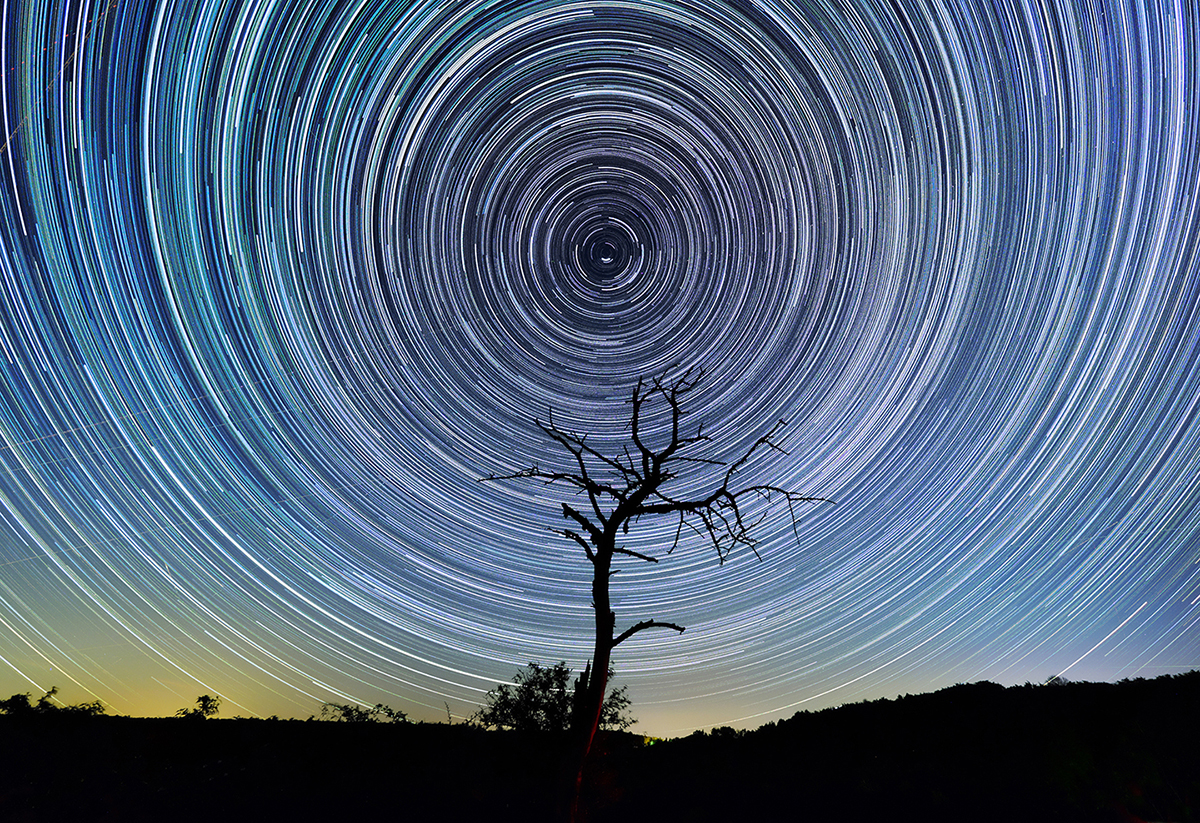
Earth rotation around the Polaris
FUJIFILM X-T1 | F4.0 | 30 sec. | ISO 6400 | 10mm
Postproduction: Combination of 77 single shots-
FUJIFILM as the ultimate system camera in astrophotography
The universe is infinite and just as infinite and diverse are its motives. As with any kind of photography, the right equipment is needed to capture them optimally. For astrophotography I have found the perfect conditions in the FUJIFILM X system. The extremely good noise behavior in the high ISO range alone is reason enough for me to work with FUJIFILM. The reason is that in astrophotography I am shooting usually with high ISO settings. Another reason why I love the FUJIFILM X system is the legendary film simulations. These are analog color profiles that bring the characteristics of nostalgic FUJIFILM slide film to life in FUJIFILM X system digital cameras. I hope that the great performance of FUJIFILM X system cameras is reflected in my astrophotograhy and speaks for itself.
-
More about Eugen Kamenew:

The red planet Mars in great opposition on 26.07.2018 in Assamstadt
FUJIFILM X-T2 | F1.2 | 8 sec. | ISO | 56mm














































